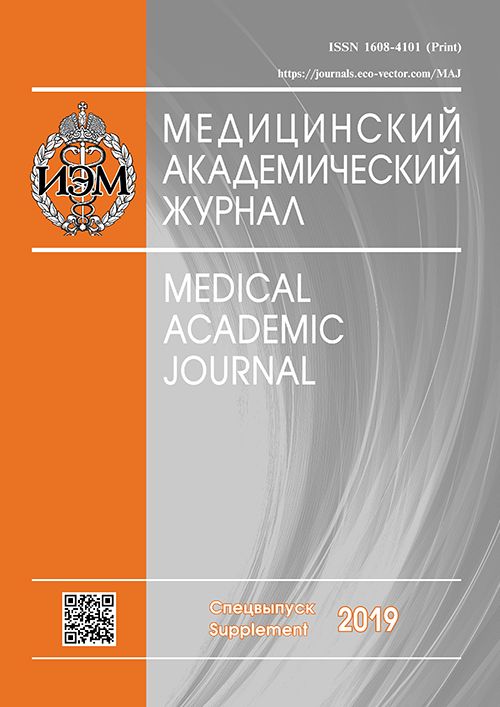CALPAIN ACTIVITY UNDER EXPERIMENTAL INCREASING OF DOPAMINE LEVEL
- Authors: Pestereva NS1, Marshak AZ2, Karpenko MN1,2
-
Affiliations:
- Institute of Experimental Medicine, Saint Petersburg
- Peter the Great Saint Petersburg Polytechnic University, Saint Petersburg
- Issue: Vol 19, No 1S (2019)
- Pages: 221-222
- Section: Articles
- Published: 15.12.2019
- URL: https://journals.eco-vector.com/MAJ/article/view/19407
- ID: 19407
Cite item
Abstract
The aim of our study was to identify the activity of calpains under conditions of an experimental increase in the level of dopamine. The work was performed at three levels: in vivo, in situ, in vitro. An in situ study was carried on a model of isolated nerve endings - synaptosomes. Using casein zymography in solution with FITC-casein, it was shown that incubation of synaptosomes dopamine leads to calpains secretion into the synaptosomal medium. The dopamine ability to directly activate calpain was demonstrated by casein zymography in a gel. Incubation in an activation buffer containing dopamine instead of the classical activator, calcium chloride, led to the activation of calpain-2. An in vivo experiment was performed on Wistar rats. The experimental group was orally administered the drug L-dopa (100 mg/kg), the control group - saline was injected in the same way.
Keywords
Full Text
About the authors
N S Pestereva
Institute of Experimental Medicine, Saint Petersburg
A Z Marshak
Peter the Great Saint Petersburg Polytechnic University, Saint Petersburg
M N Karpenko
Institute of Experimental Medicine, Saint Petersburg; Peter the Great Saint Petersburg Polytechnic University, Saint Petersburg
References
- Karpenko MN, Tikhomirova MS. The role of calpains in regulating synaptic transmission. Neuroscience And Behavioral Physiology. 2015; 45(8): 952-956.
- Cheng SY, et al. Regulatory role of calpain in neuronal death. Neural Regen Res. 2018;13:556-562.
- Schlachetzki JC, et al. Dopaminergic lesioning impairs adult hippocampal neurogenesis by distinct modification of α-synuclein. Journal of Neuroscience Research. 2015;94:62-73.
- Baudry M, Bi X. Calpain-1 and calpain-2: the yin and yang of synaptic plasticity and neurodegeneration. Trends Neuroscience. 2016;39:235-245.
- Chagniel L, et al. Striatal inhibition of calpains prevents levodopa-induced neurochemical changes and abnormal involuntary movements in the hemiparkinsonian rat model. Neurobiol Dis. 2012;45:645-655.
Supplementary files







